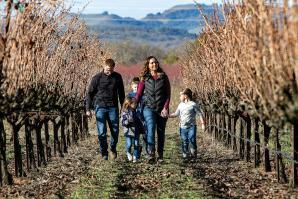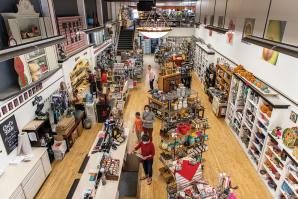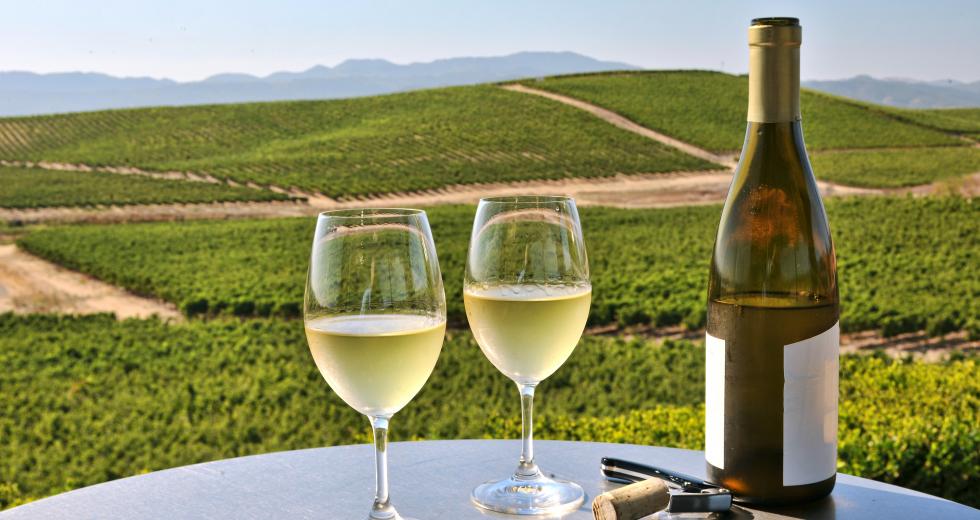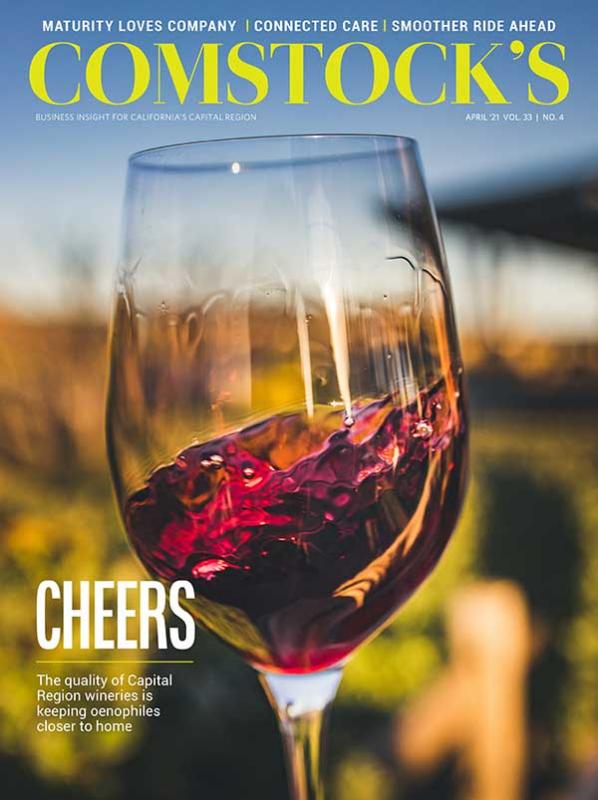Before I joined Comstock’s two years ago, while enjoying eight months of being unemployed (my longest stretch without a job since I was 14), I discovered a new favorite pastime, wine tasting, and I also traveled frequently. Both of those industries have suffered greatly during the coronavirus pandemic, but both are poised for dramatic comebacks, as reported in this month’s stories “A Blend for Success” (page 34) and “Smoother Ride Ahead” (page 54).
Napa and Sonoma counties have earned a worldwide reputation for producing excellent wines. That region also is known for large crowds and expensive wines, and going there takes most of a day (or more) for visitors from the Capital Region. But, as writer Daniel Barnes points out in this issue, oenophiles from our region can stay close to home and still enjoy exceptional wine. Within an hour drive of downtown Sacramento, wine lovers can visit a handful of wine regions, including the Shenandoah Valley, Lodi, Clarksburg, Placer County and Fair Play.
On a beautiful spring day, the drive to Ironstone Vineyards in Murphys or Helwig Winery in Plymouth is serene. The buildings and grounds at Ironstone match almost anything Napa has to offer, and the view at Helwig is breathtaking. Clarksburg, just 20 minutes from downtown Sacramento, is home to the Old Sugar Mill and its 14 tasting rooms, plus more than a handful of other wineries, including Scribner Bend Vineyards and nationally known Bogle Vineyards. And about 35 miles south of Clarksburg, Lodi has more than 80 wineries.
Eric Johnson’s story about Sacramento International Airport points out the dramatic decline of passengers due to the pandemic, but it also details ways airport officials have lessened the financial pain. In my experience, the best thing Sacramento International has going for it is how easy it is to get to and park there, and it draws travelers from across Northern California. As the shutdown due to the pandemic slowly eases, Sacramento International will likely return to its busy ways with people eager to travel again.
Sears’ Sad Farewell
When Sears announced in February it was closing its only remaining full-line store in the Sacramento area, it brought back a flood of memories. No matter where you were raised, you likely grew up with Sears. And if you didn’t have one in your town, you most likely ordered through its immense catalog, which seemingly was delivered to every home in the country during Sears’ heyday.
One could buy nearly anything at Sears, which was a big-box store before that term existed: appliances, tools, clothing, lawn and garden equipment, sporting goods, auto parts, and more. And from 1908 to 1940, Sears sold about 70,000 kit homes in 447 styles through its Modern Homes catalog. One of those homes is in the unincorporated Franklin area of Sacramento County southwest of Elk Grove. According to Dennis Buscher, a board member of the Elk Grove Historical Society, the Smith family purchased the Maytown model, No. 167 in the 1913 Sears Modern Homes catalog, listed for $823, which included everything except labor, cement, brick and plaster. Buscher says the home was shipped by rail to the Franklin Western Pacific Railroad station, and the Smith family had to haul everything to the building site.
Even the biggest of today’s most successful big-box stores, such as Walmart, Costco, Target and Home Depot, don’t sell kit homes.
Readers’ Responses Are In
In January, we published a reader feedback survey on our website, comstocksmag.com. Here are some interesting highlights:
• More than half (53.4 percent) of respondents say they visit our website at least monthly.
• According to the respondents, the most appealing topics are food and drink, arts and culture, nonprofits and philanthropy, and agriculture and environment.
• Annual themes that interested our respondents the most are Innovation, Women in Leadership, Housing and Family Business.
• We were surprised by the number of respondents who don’t receive our weekly newsletter or listen to our podcasts. We encourage you to sign up for our newsletter at comstocksmag.com/newsletter. And each month, our podcast, “Comstock’s Talks,” features audio versions of two or more stories. Check it out at comstocksmag.com/podcasts.
Thanks to all of those who participated, and the editorial team will use the results to help shape some of our coverage this year. Two respondents, Lorretta Laslo and Heather Foreman, were randomly selected to receive $100 gift certificates to the Mexican restaurant Mayahuel in Sacramento. Congratulations, and thanks to everyone for reading.
–
Stay up to date on business in the Capital Region: Subscribe to the Comstock’s newsletter today.
Recommended For You

Fewer Jobs, More Wine
California’s deadly COVID year in 9 charts
In highway crash statistics, unemployment claims, anti-Newsom lawsuits and florist sales, these charts present a “before” and “after” picture of these last surreal, lonely, heartrending, life-ending and life-altering 365 days.

The Capital Region’s Small Wineries Offer Something Napa Cannot
“Farm to Fork” is not just an advertising slogan: It reflects a
big part of the region’s identity, and that reputation is
growing. Wine has become one of California’s most recognizable
crops and production has grown tremendously over the last two
decades. California is home to 4,700 wineries and produces more
wine than any other U.S. state.

Off the Beaten Track: A Return to Roots
Award-winning Suisun Valley winemaker continues her family's legacy
The Tolenas Winery label produces a variety of wines, but what sets it apart is the white pinot noir Eclipse that took a gold medal at the 2019 International Women’s Wine Competition.

Something for Everyone
How a 90-year-old store with a new owner is surviving a pandemic
Small businesses continue to open, and some longtimers — like Tess’ Kitchen & Culinary — have found ways to thrive under new owners.





